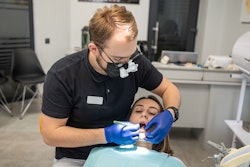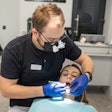
With yet another Oral Cancer Awareness Month about to end, concerning statistics still exist. According to the Oral Cancer Foundation, approximately 58,500 people in the U.S. will be newly diagnosed with oral cancer in 2024.
As you may already know, oral cancer is an umbrella term that includes cancers that occur in the mouth itself, such as salivary gland cancers, tongue cancers, and mucosal soft tissue cancers as well as cancers that occur in the oropharynx, including the tonsils and the base of tongue and on the exterior lips of the mouth.
Is oral cancer exclusively a dental thing?
Despite being established in 1998 by the Oral Cancer Foundation and being recognized by most dental trade associations, Oral Cancer Awareness Month is primarily a dental industry observance and may be another example of how dentistry's separation from medicine is not always in the best interest of the patient.
Some say the wall between dentistry and medicine was officially erected in 1840 with the founding of the Baltimore College of Dental Surgery in 1840, which established a separate course of study than medical schools. This may be a contributing factor as to why there is no national screening policy or protocol standard, which may be why there's been an annual increase in the occurrence of oral and oropharyngeal cancers over the years -- a trend that is expected to continue in the foreseeable future.
According to the Oral Cancer Foundation, "Oral cancer kills one person in America every hour of every day, 24-7-365. Of those newly diagnosed today, about half will be alive in five years. Even surviving this disease will mean that you endured brutal treatments and leave you with life-long issues that will compromise your quality of life."
We need an awareness breakthrough!
Does it have to be this way? What's the missing piece of the puzzle? In my opinion, a concerted, consistent effort to encourage greater medical-dental collaboration and co-management could be the catalyst of a paradigm shift toward earlier detection and improved survival rates for oral cancer. The ADA and the American Medical Association, are you listening?
Here are five ways we can make this paradigm shift happen:
1. Industry collaboration on patient education and awareness campaigns: Dentists and physicians can collaborate on joint educational and public service announcement campaigns on a national association level and in their local communities.
Let's face it. Dentists and hygienists should not be the only healthcare providers talking about Oral Cancer Awareness Month and emphasizing oral cancer risk factors, symptoms, and the importance of regular screenings. Taking a multidisciplinary approach to creating awareness can empower more patients to take proactive steps towards prevention and early detection.1
2. Joint screening programs: Dentists and physicians can collaborate to implement joint oral cancer screening programs in their respective offices by providing annual screenings for each patient starting at the age of 18 or when a patient presents with a suspicious lesion, chronic sore throat, difficulty swallowing, or other symptom.
With oral HPV being an increasingly common risk factor, a medical office may be the best place to have a doctor-patient discussion about the patient's sexual activity and their risk of developing oral HPV. I believe many patients feel awkward about having this discussion with their dental provider and vice versa!
Implementing joint screening programs may require some interdisciplinary cross-training or dental providers visiting medical offices. Either way, this strategy can help ensure that patients receive comprehensive oral screenings during their dental and medical visits, which can lead to earlier detection and improved outcomes.2
3. Referral networks and communication: If oral cancer screenings cannot be incorporated into a patient's medical exam, patients with known risk factors and existing symptoms should be referred to a dental office that provides comprehensive oral cancer screenings as a standard operating procedure.
Establishing efficient referral networks and improving communication between dental and medical providers can also ensure timely access to specialized care for patients suspected or diagnosed with oral cancer, which can lead to faster treatment initiation and better outcomes.3
4. Interdisciplinary treatment teams: In hospital systems, establishing multidisciplinary treatment teams involving dentists, oral surgeons, oncologists, and other healthcare professionals can ensure that patients receive comprehensive care tailored to their individual needs. This approach has been shown to improve patient outcomes and quality of life.4
5. Continuing education and training: Dentists and physicians should engage in continuing education programs to stay updated on the latest advancements in oral cancer detection, treatment, and prevention. Perhaps joint classes at universities that have medical and dental schools would be a step in the right direction. This ongoing training ensures that healthcare providers can deliver the highest quality of care to their patients.1
Conclusion
By implementing these five collaborative strategies, dentists and physicians together can shift the oral cancer paradigm to significantly reduce oral cancer mortality rates and improve overall patient outcomes. Improving oral cancer awareness is a year-round initiative that requires joint efforts of the dental and medical communities.
References
- Yamada A, Shiraishi Y, Miura H, et al. Development of a thermodynamic control system for the Fontan circulation pulsation device using shape memory alloy fibers. J Artif Organs. 2015 Sep;18(3):199-205. doi: https://doi.org/10.1007/s10047-015-0827-z.
- Early Detection, Diagnosis and Staging. The Oral Cancer Foundation. Published 2018. https://oralcancerfoundation.org/cdc/early-detection-diagnosis-staging/.
- Interprofessional collaboration: A dental and medical integration. Journal of the California Dental Association. Published 2018. Retrieved from https://www.cda.org/Portals/0/journal/journal_112018.pdf.
- Internet-based intervention may help smokers quit, study finds. JADA. 2010;141(2):138-140. doi: https://doi.org/10.14219/jada.archive.2010.0125.
Michael Ventriello is the owner of Ventriello Communications and is widely recognized as the "Dental Launch Expert." He specializes in developing strategic marketing and public relations programs needed to launch game-changing dental companies and products. Ventriello is also a dental industry pundit and author. Contact him at [email protected]
The comments and observations expressed herein do not necessarily reflect the opinions of DrBicuspid.com, nor should they be construed as an endorsement or admonishment of any particular idea, vendor, or organization.



















